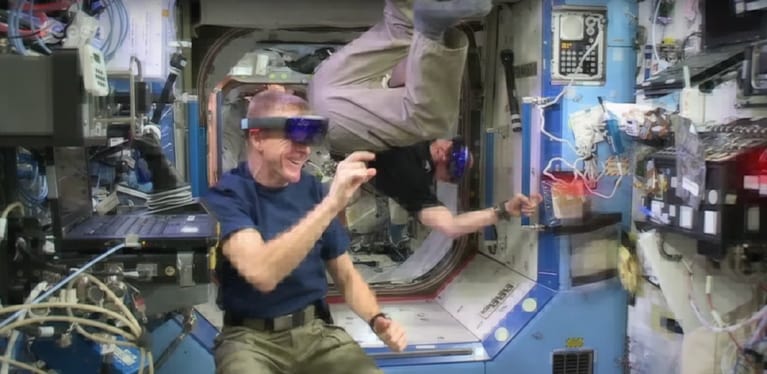Yesterday we took a couple of hours to play with the Hololens device, the augmented reality helmet from Microsoft. We quickly did a prototype without a single line of code, using the basic tools available out of the box in the Hololens: display images, 3D objects or web browser windows in the room. All this was done using the device itself, and looking funny.
The idea
As a designer, I wanted to learn how to play and display information in 3D, and of course, have fun with this nice big tech-toy. During the tests, we thought about what was already at our disposal to play with. We remembered a web tool we'd developed internally. It's a simple web interface showing the reservations of our conference rooms. You can display the detail of a room and book it through a simple form. What a nice base to start with!
The process
Put up web browsers in the hallway, near the doors to the conference rooms. Display the reservation system in these windows. Then virtually put an image "on" the doors: a green checkmark if the room is free, a red cross if the room is occupied. That's it.
The result
We were able to walk in the office, see clearly which room was free and book it through the web interface displayed next to the door. Yay!
Well, wearing this big device on your head still make your colleagues laugh, but this technology is so fascinating that you quickly forget you look like an astronaut talking to invisible things, lost in the wide space of the office.
Next steps
As the prototype is made with the basic tools of the device, it can't be saved and started as an app. All the windows can be moved or removed by the next user, not very convenient. Encapsulate these functionalities into an app should be the next step. In parallel, the UX experience could be adapted to this new 3D environment: bigger buttons, simpler interface, or why not trigger a reservation through a single voice command: “Hey, I need this room right now for 30 minutes!”
Learnings
Prototyping for augmented reality can be quick and efficient without effort, even for non coders. Designers can learn intuitively how to layout information, arrange things and create a visual hierarchy directly in the space. A couple of images and a bit of HTML can be enough to deliver great prototypes and be a solid base for your future cutting edge application.

